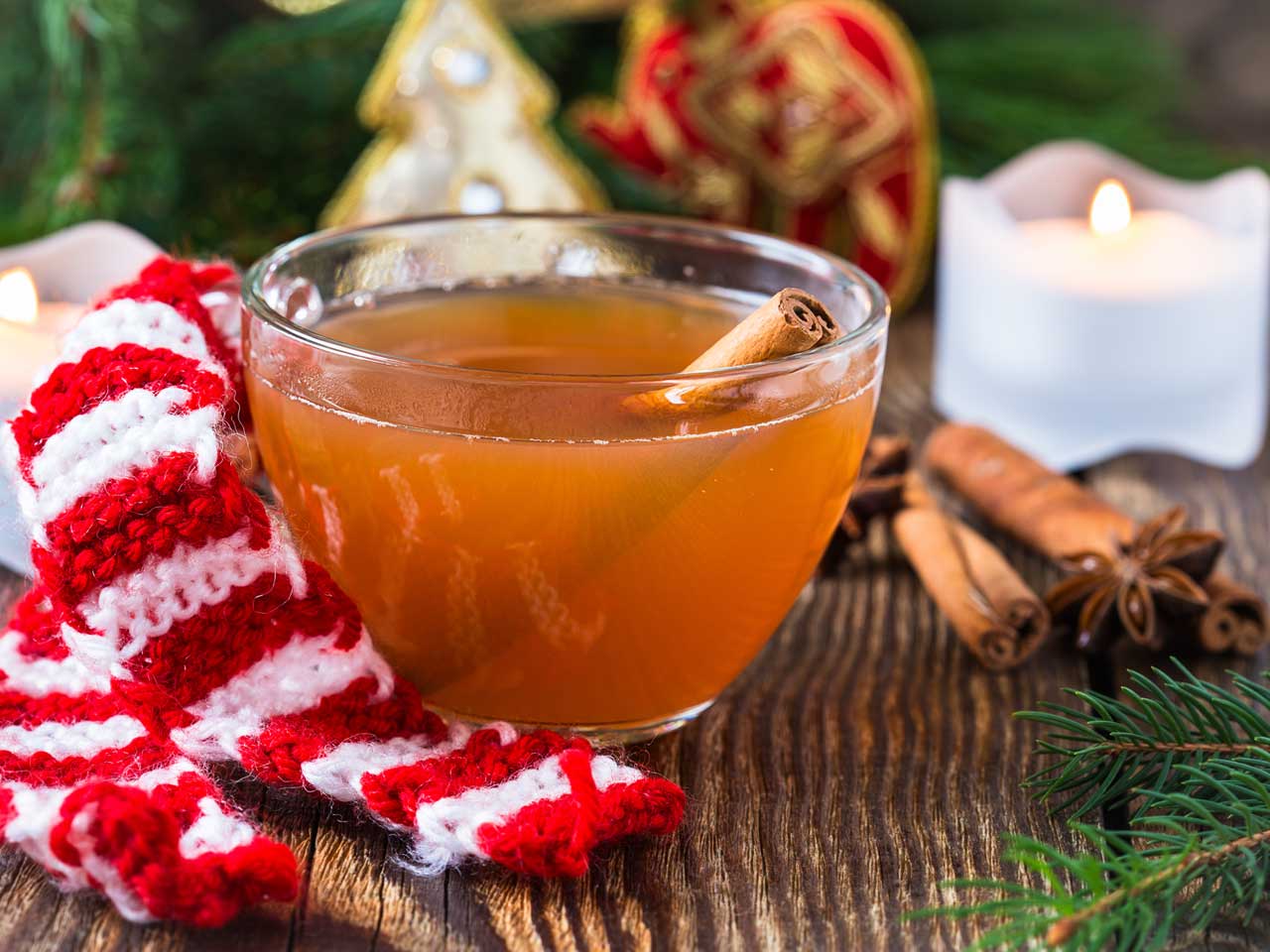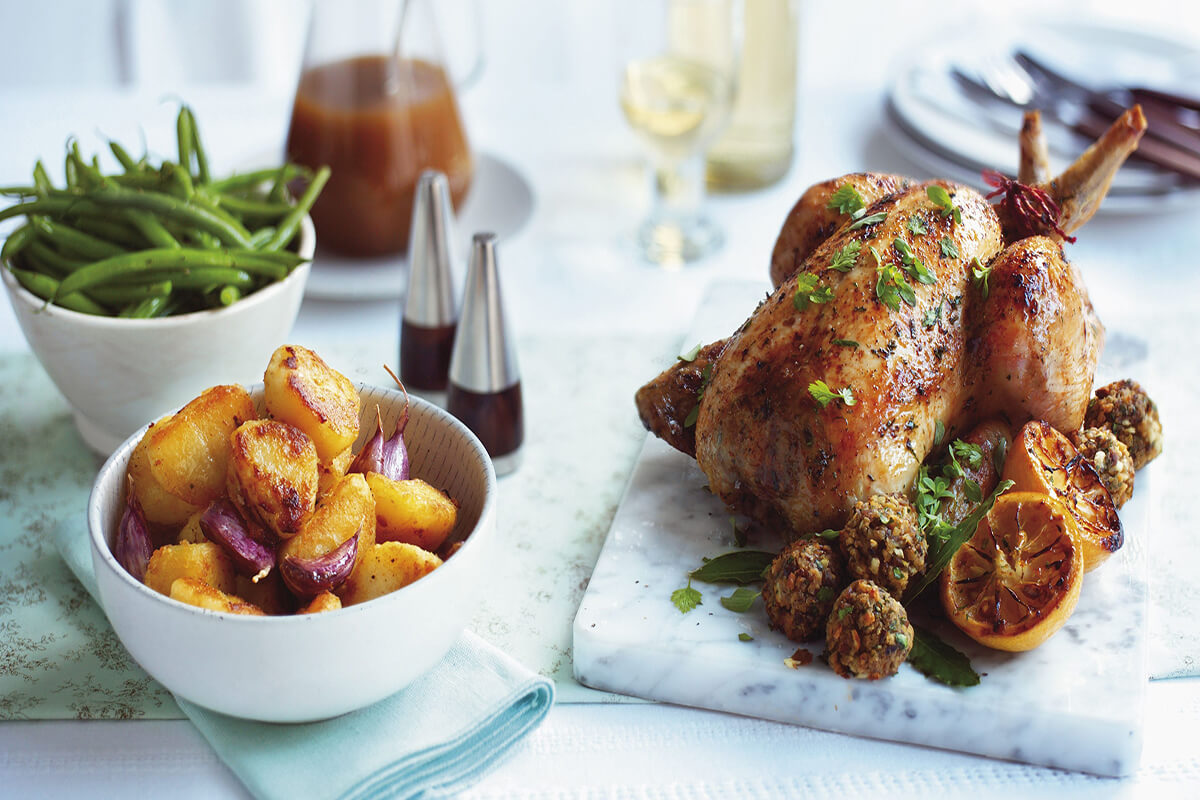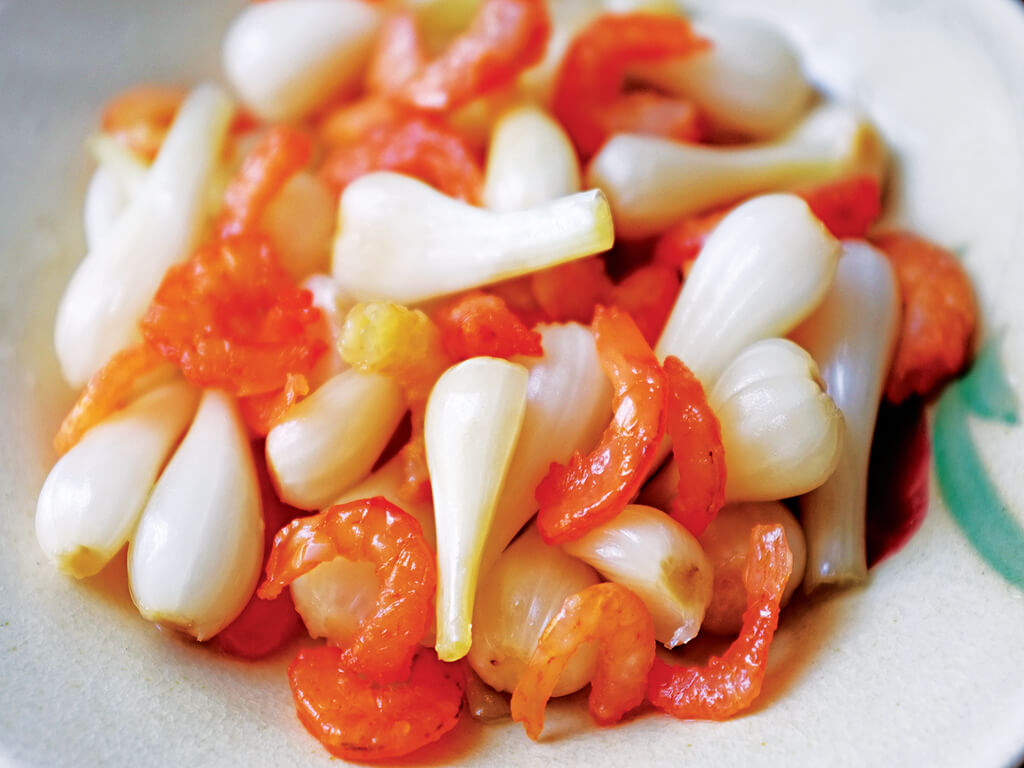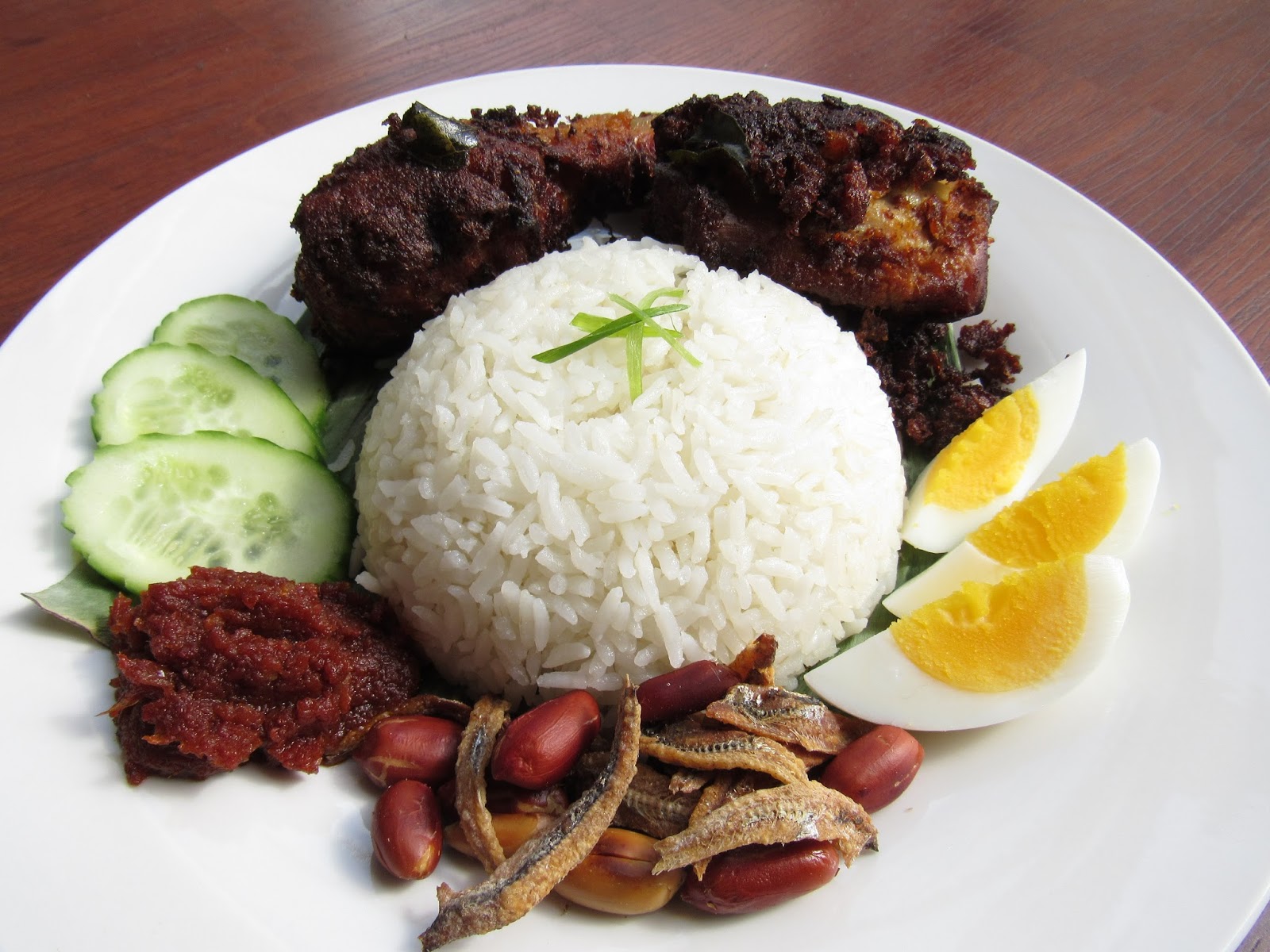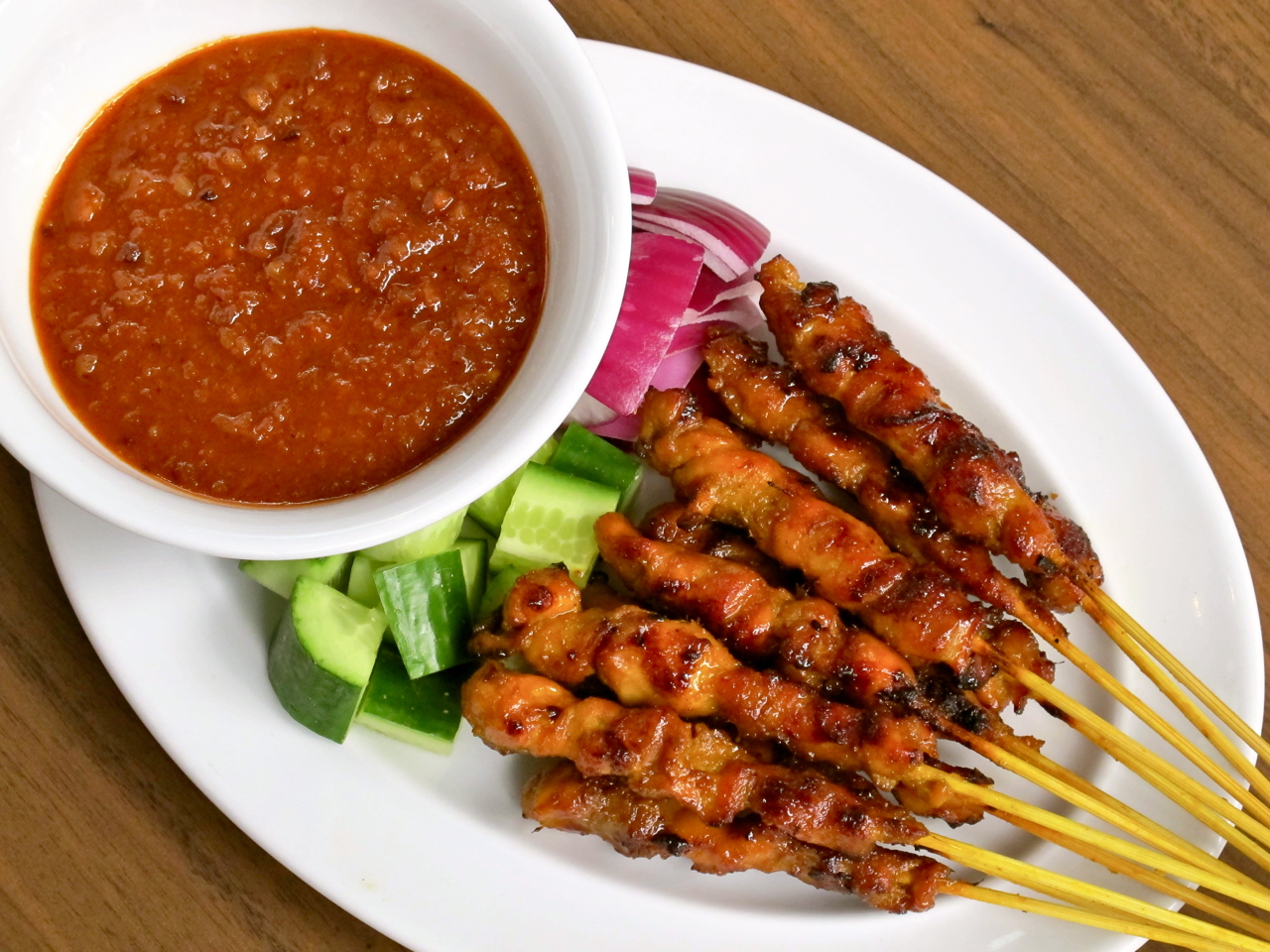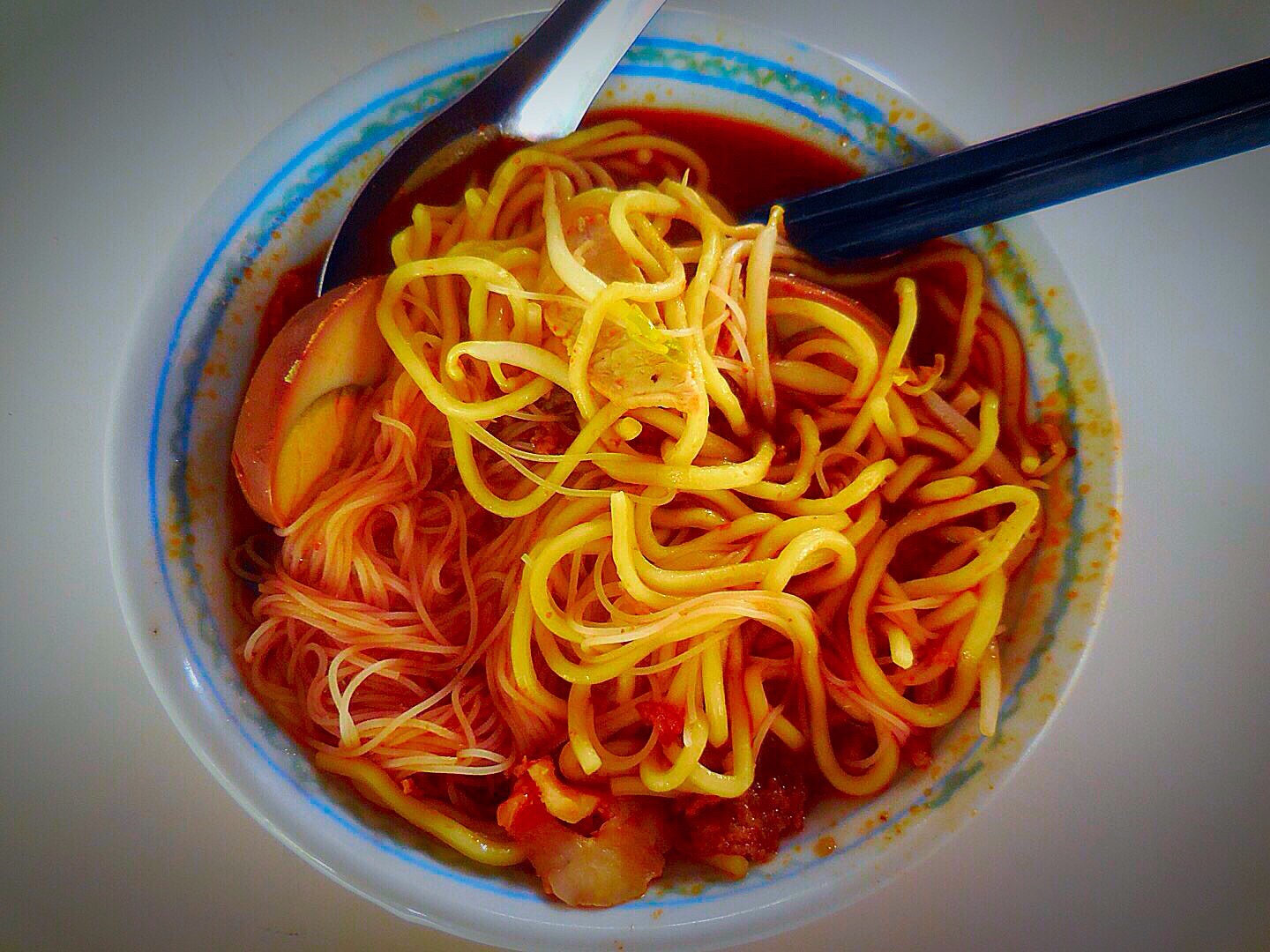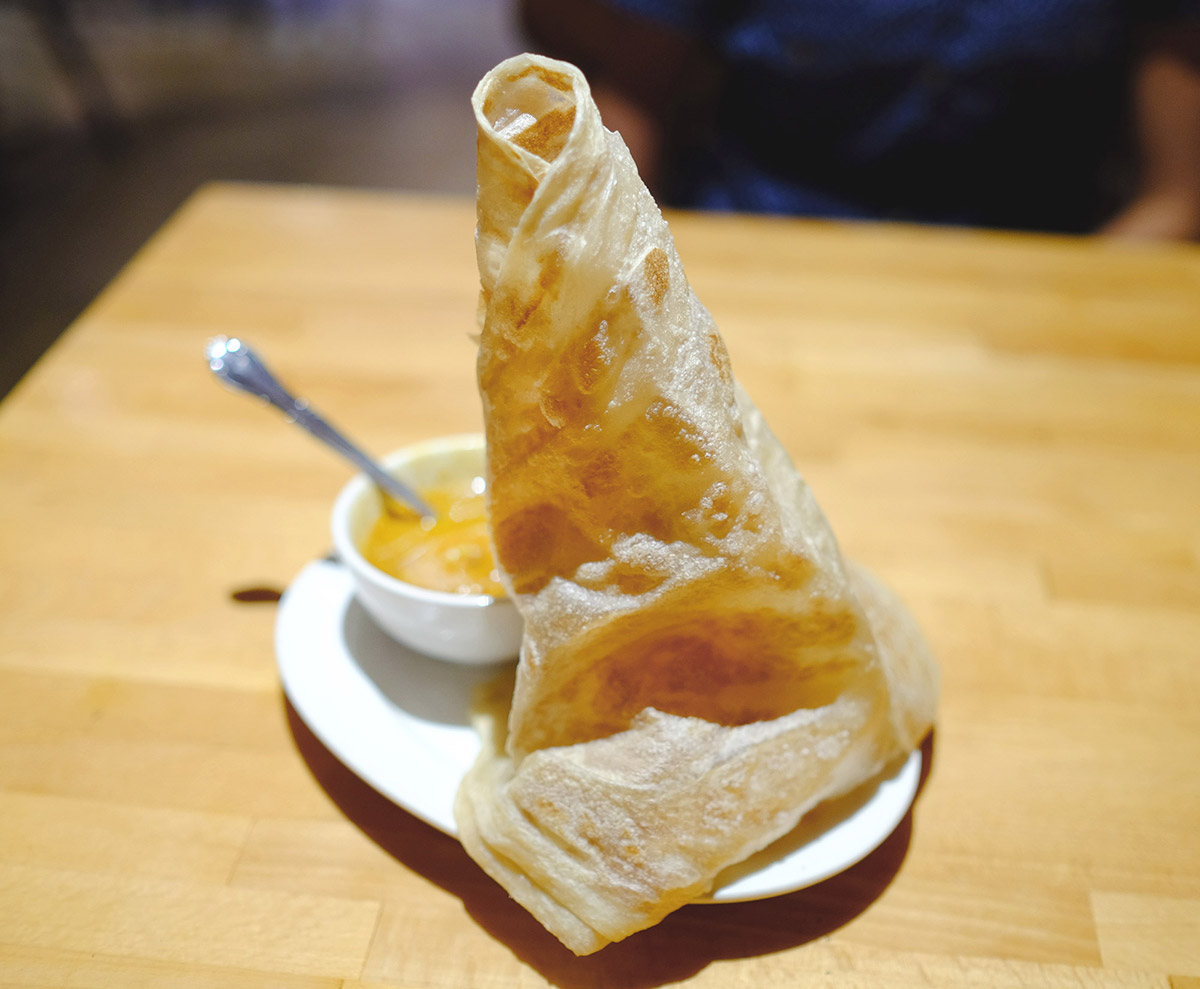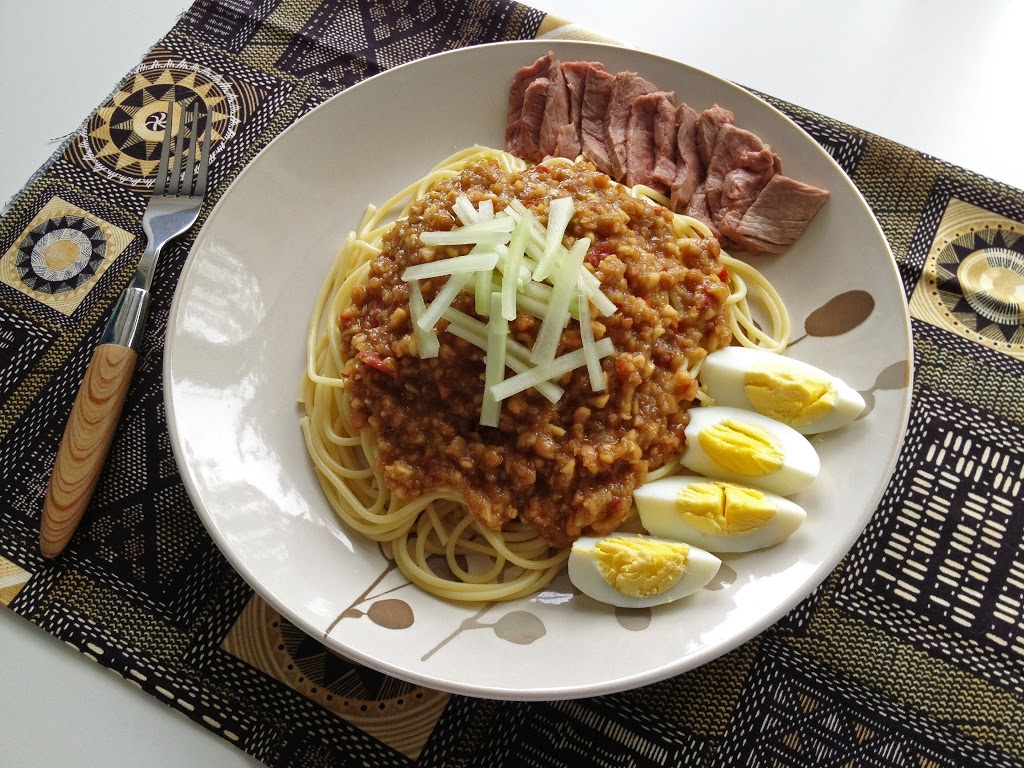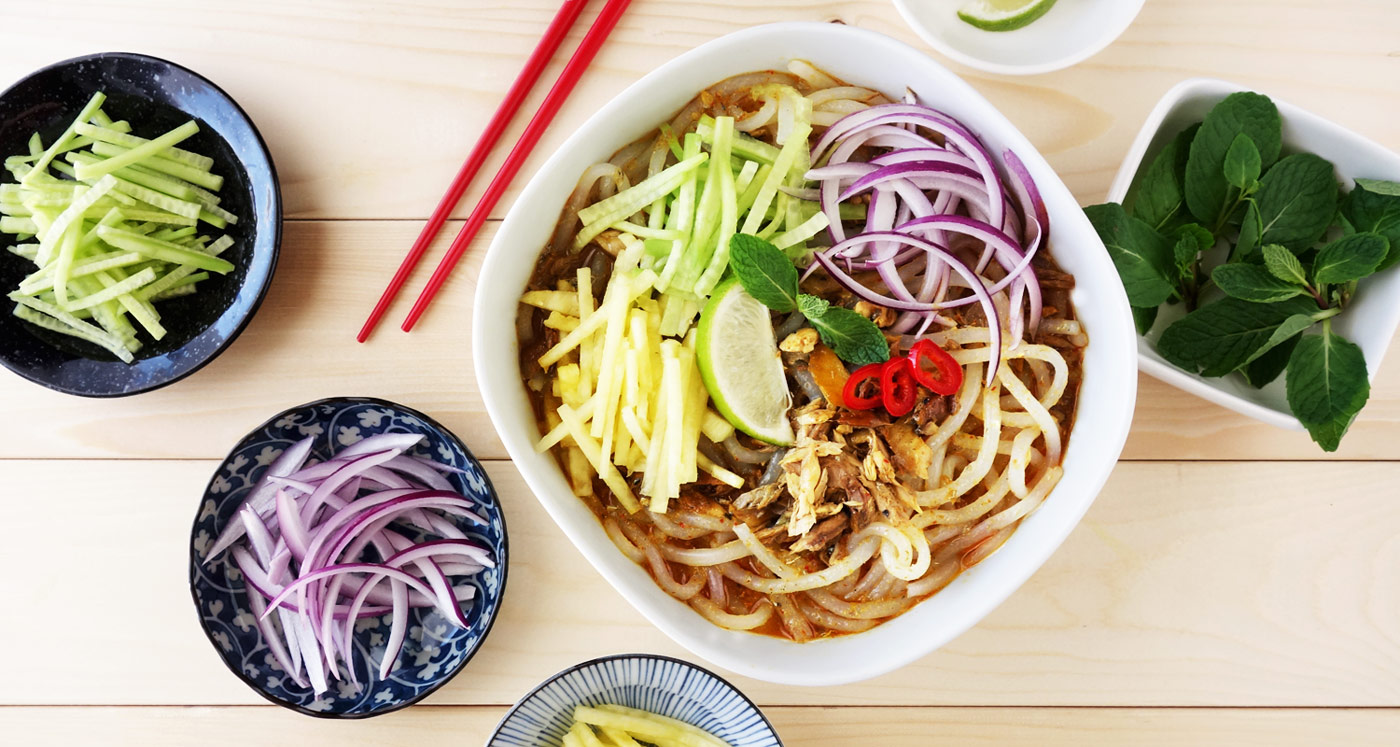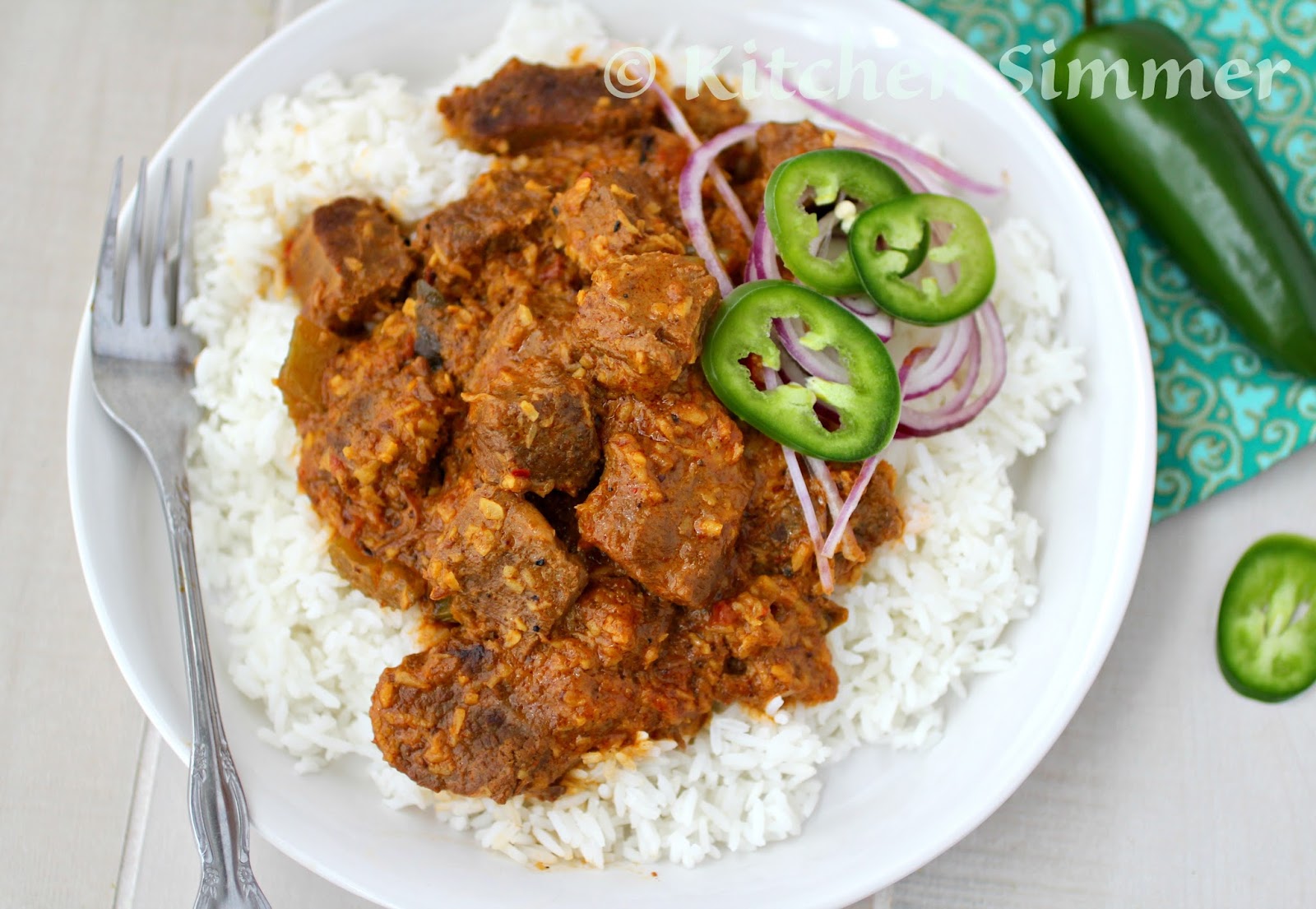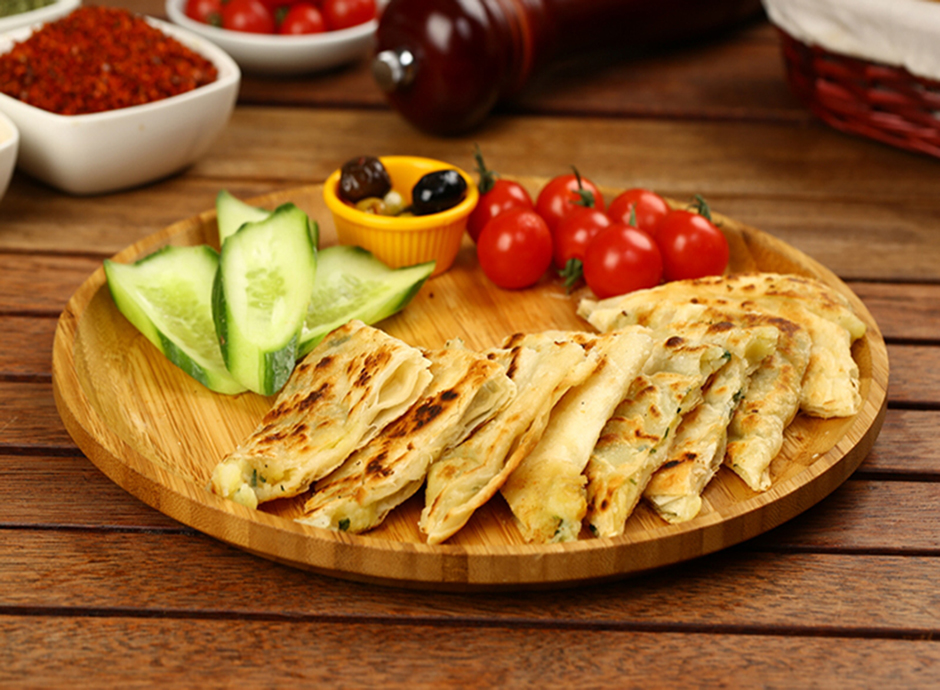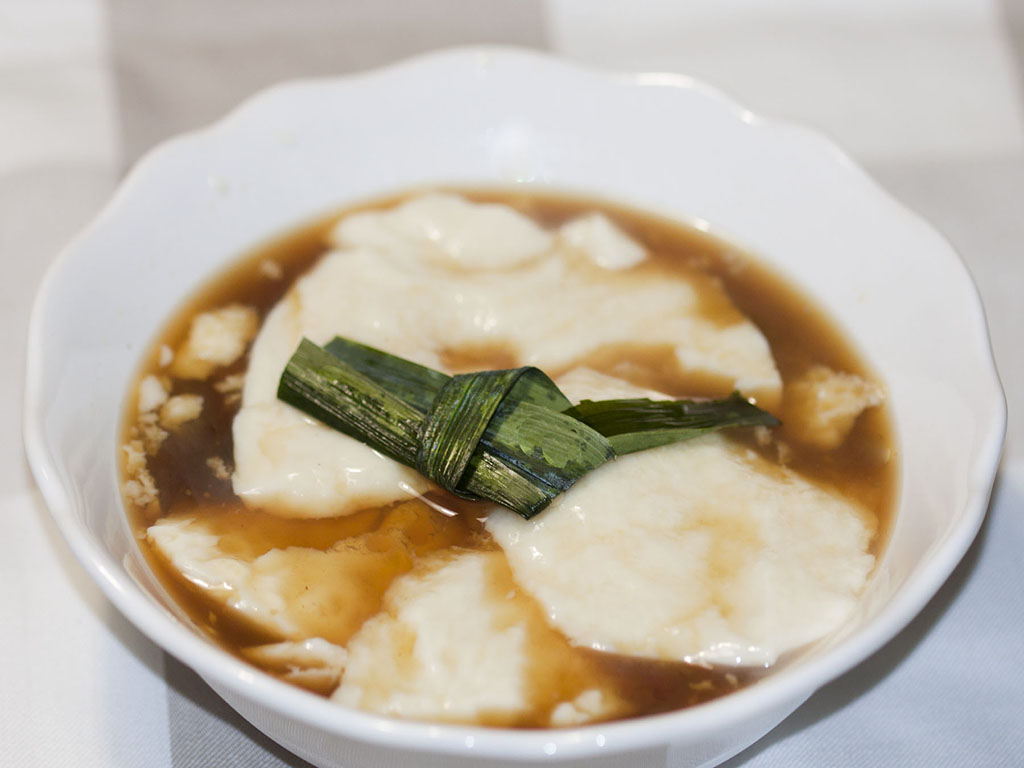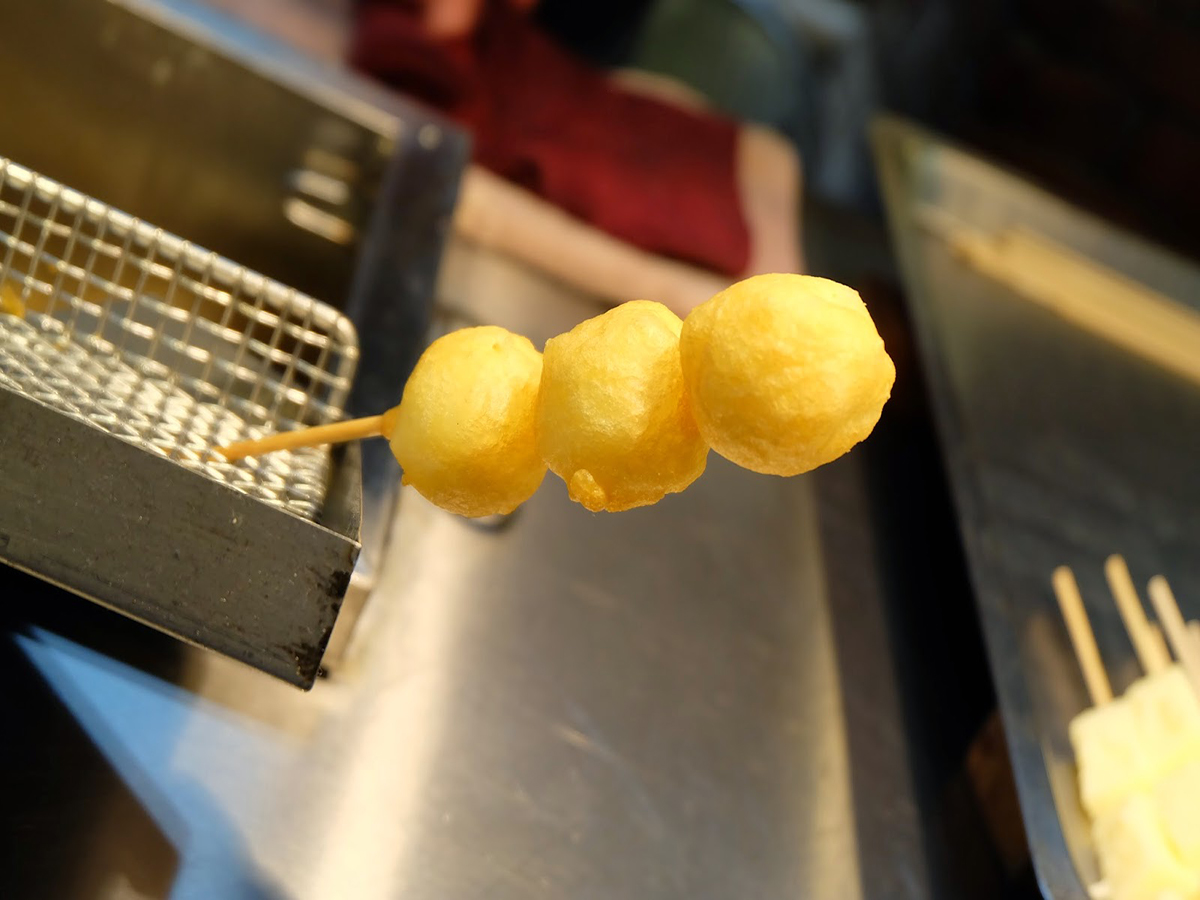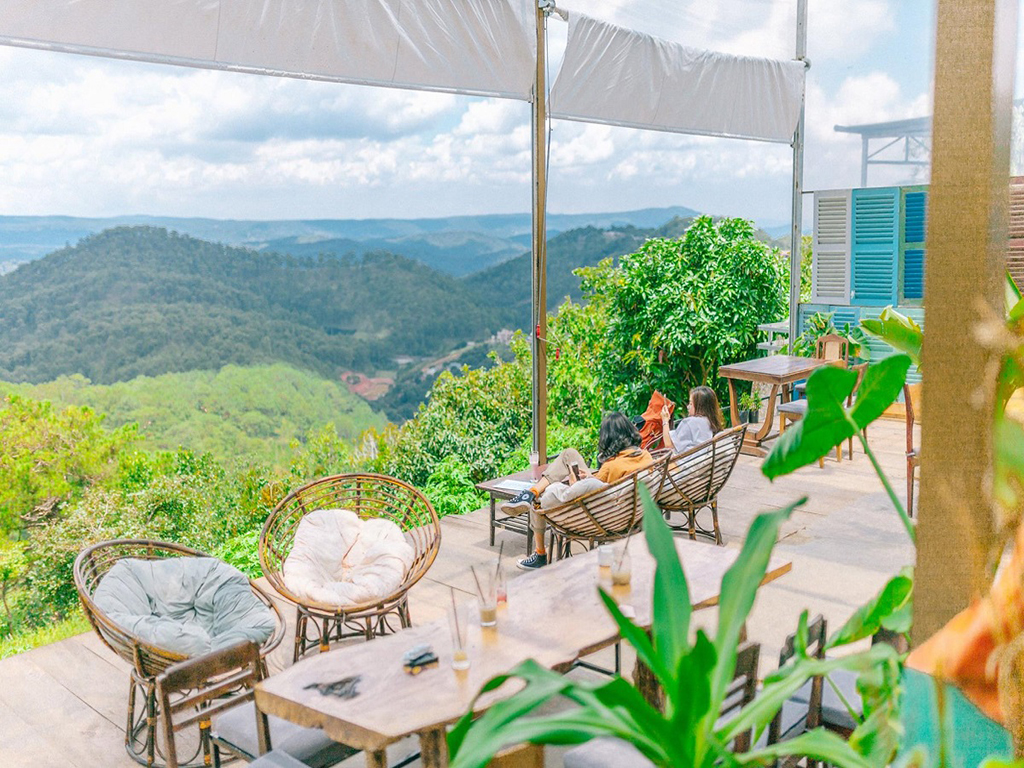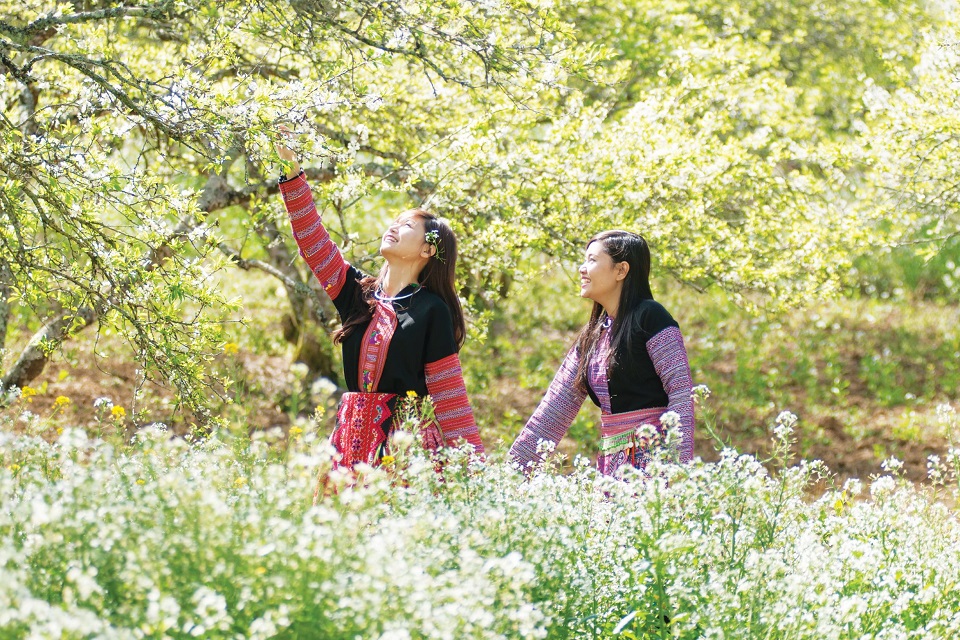Nasi lemak
If there is a quintessential Malay staple rice dish, that is nasi lemak. Literally meaning “butter rice,” it is a simple white rice dish spruced up with almonds, dried anchovies, cucumber, boiled eggs, and spicy sambal sauce. You may find it in two different varieties: the simple street version packed in a banana leaf and conceived to be swiftly consumed sitting on a stool at a street stall, or the more “up market” kind served in restaurants on a plate. The difference usually comes with pricing, where a street side nasi lemak may cost you as low as 1 ringgit (around $0.33USD), while the one served on a plate may reach up to 6 ringgit ($2), according to the quantity of side choices that are offered along with the rice. To many, this is the essential dish representing the Malay Muslim majority and is not to be confused with Nasi goreng, or better, the different fried rice variety.
Satay
This is barbeque, Malaysian style. Feast on different chicken, lamb, or beef mini skewers perfectly roasted on a fire grill and served together with a sweet-sour crumbled peanut sauce.
The most daring may try the cow intestines, definitely a bit more chewy than the others, but totally enjoyable. You may also try the squid satay, which is generally served at most street stalls lining the Malaysian coastline. The specialty of satay is the mildly spicy peanut sauce served with your skewers. By skipping the dip, you would not really savor satay’s unique flavor. A perfect companionship for those long-lasting Malaysian sunsets spent sitting at a street stall or relaxing at a beach’s esplanade, preferably with Tiger beer in hand.
Char koay teow
This kind of fried noodles is typically Malaysian: flat, wide noodles are served together with fried egg, green lettuce, bean sprouts, and seafood. This constitutes one of the country’s not-to-miss dishes. It comes in a Chinese and Malay version – the former being drier and the latter heavier on prawn and minced seafood. Char koay teow differs in each region, and different cities provide a slightly different mix of the ingredients, with each one adding local flavor. One of the most delicious and famous is definitely Penang island’s, where you can literally find char koay teow anywhere you look for food.
Hokkien mee
Typical noodle staple dish of the Malaysian Chinese community, hokkien mee is a hot bowl of steamy noodles cooked with prawn, boiled egg, chilies, and spices. To me, this is possibly the best, most representative noodle dish in the country. You can choose white, yellow, or glass noodles, or a mix of the three, to slightly modify the taste and the way your noodles will absorb the spicy broth. Make sure you have a drink and some tissues on you, as hokkien mee can literally “open up” your sinuses! Hokkien mee is recommended for hot nights and monsoon days. Again, Penang has some of the best in the country.
Tandoori chicken
An imported Indian specialty, this chicken is cooked inside of a traditional tandoori bread oven and is served together with fresh nan bread, onions, and chutney dipping sauce. If you are a meat lover, this is what you will remember Malaysia for the most. The meat gets steamed to perfection and made softer by spreading a reddish spicy sauce layer on the outside. The more it gets cooked, the crunchier it gets on the outside: if you see that the meat’s corners are burnt black, do not panic as that is just a symptom of tandoori awesomeness. Again, Tiger beer and a room filled with chatty Indians eating with hands is the best setting to sink your teeth into some tandoori chicken’s sweetness
Roti canai and dosai varieties
Of all the different kinds of breads Malaysia has to offer, Roti Canai – soft, buttery round bread served with red curry – is the most popular. It comes in a simple variety – roti canai biasa – without any topping, or in several other types – roti telur – with fried egg, roti pisang – with banana, roti kaya – mixed vegetables or sugary variations like kaya (traditional coconut jam), or roti sugar – sprinkled with sugar. Whatever the choice, it is ideal for breakfast and washed down with traditional Malaysian milk tea – tarik – or coffee. It is also important to remember the Indian dosai bread variety: a crispy lentil crepe which can be rolled around different kinds of vegetables such as mashed potatoes, or served empty to be dipped into chutney and coconut sauces. Ideal as an appetizer, especially before feasting on a vegetarian Indian dinner
Ais kacang
Ais kacang is ice cream Malaysian style. A blend of shaved ice, red beans, sweet corn, grass jelly, and less common, aloe-vera, cendol and coconut juice. As strange and a tad disgusting as it may sound, it is a refreshing, tasty, and unique Malaysian dessert you cannot forget to sample. Though it may sound odd, mixing red beans and sweet corn with ice is not as crazy as it sounds. Try it after a spicy meal to cool off your taste buds, and you will not regret your choice
Rojak
A mix of bean curds, fried dough fritters, cuttlefish, and cucumbers mixed with a sweet-spicy, thick peanut sauce, this Malaysian dish represents the country’s cultural mélange. It’s definitely not for everybody, and it is definitely not my favorite, but it has to get on this list because many Malaysians really love it. Try to wash it down with beer or coke as it is deep fried, and you can also drown it in an ocean of spicy peanut sauce.
Laksa
Laksa is a coconut-based rice noodle soup unique to the Australasian archipelago. It has a particular sour taste resulting by mixing together ginger torch flower, mint, shrimp paste, and fish cuts. Laksa is a very special culinary experience to be enjoyed in Malaysia. It is sour, and the strong taste may not be too appealing for everybody. It can be found in the coconut curry or sour fish soup variety – asam laksa – depending on the different regions and cities. For example, one of the most famous is “Penang Laksa”, cooked with mackerel fish cuts, lemongrass, and chili. Laksa may produce quite different taste in different Malaysian cities or regions, therefore I recommend you try as much as you can in order to get a better idea of this very peculiar tropical dish
Rendang
Again, meat lovers, this slowly roasted chicken, dipped into a mixture of ground spices curry paste and coconut milk is possibly the best import from Indonesian West Sumatra. A very popular dish to prepare for religious festivities and holidays, rendang is mostly popular among Malays and is one of the most delicious ways to cook meat in the country. Try to eat it traditionally with your right hand, eating it with some type of roti, or you can mix it with rice as is customary among many Malaysians. In this way you will discover another tropical meaning for “finger-lickin’ good”. Do yourself a favor: when in Malaysia, if offered rendang, please just say YES and hand over your plate.
Source bootsnall

